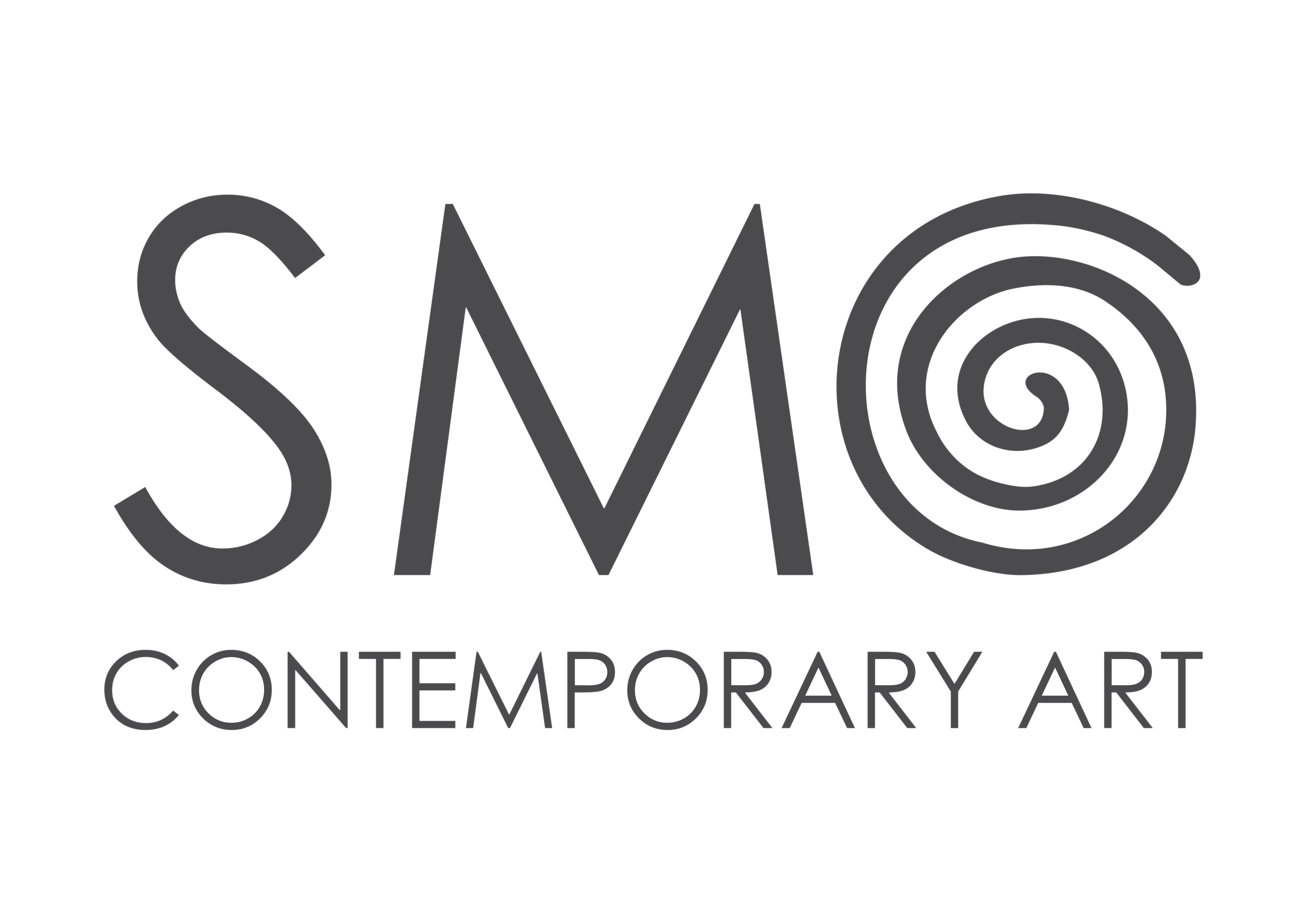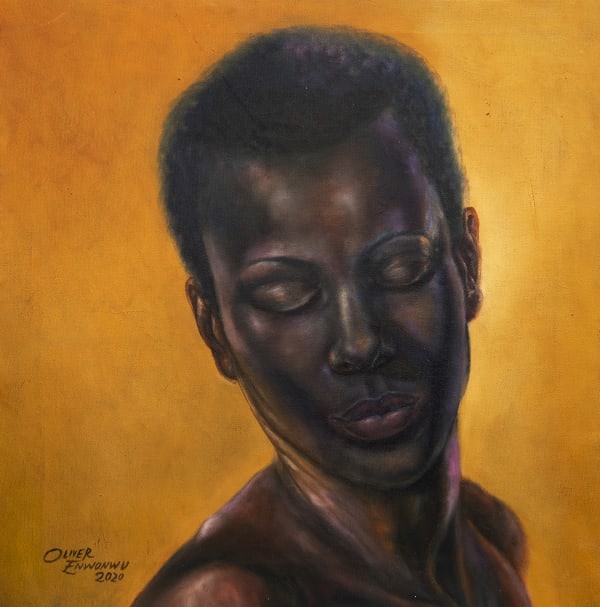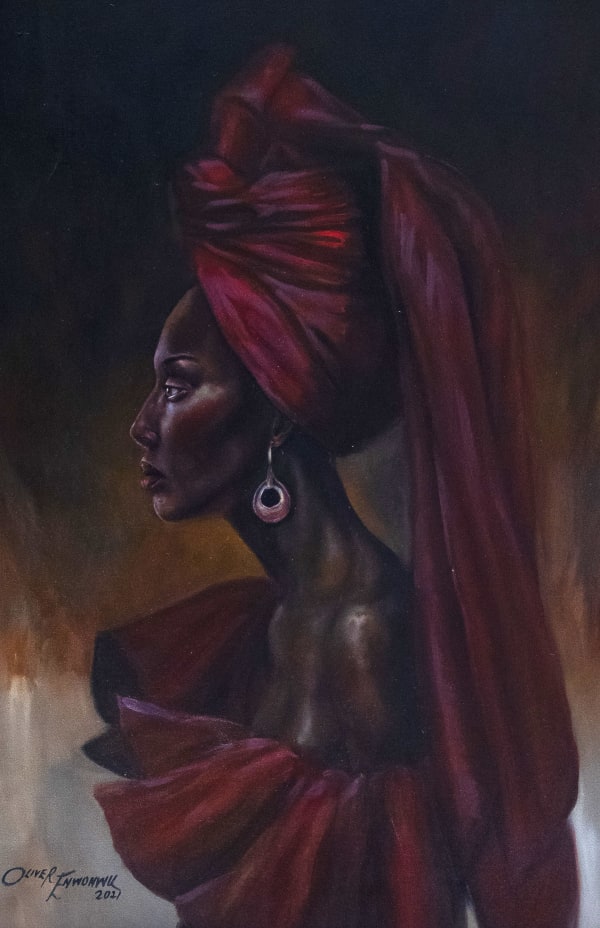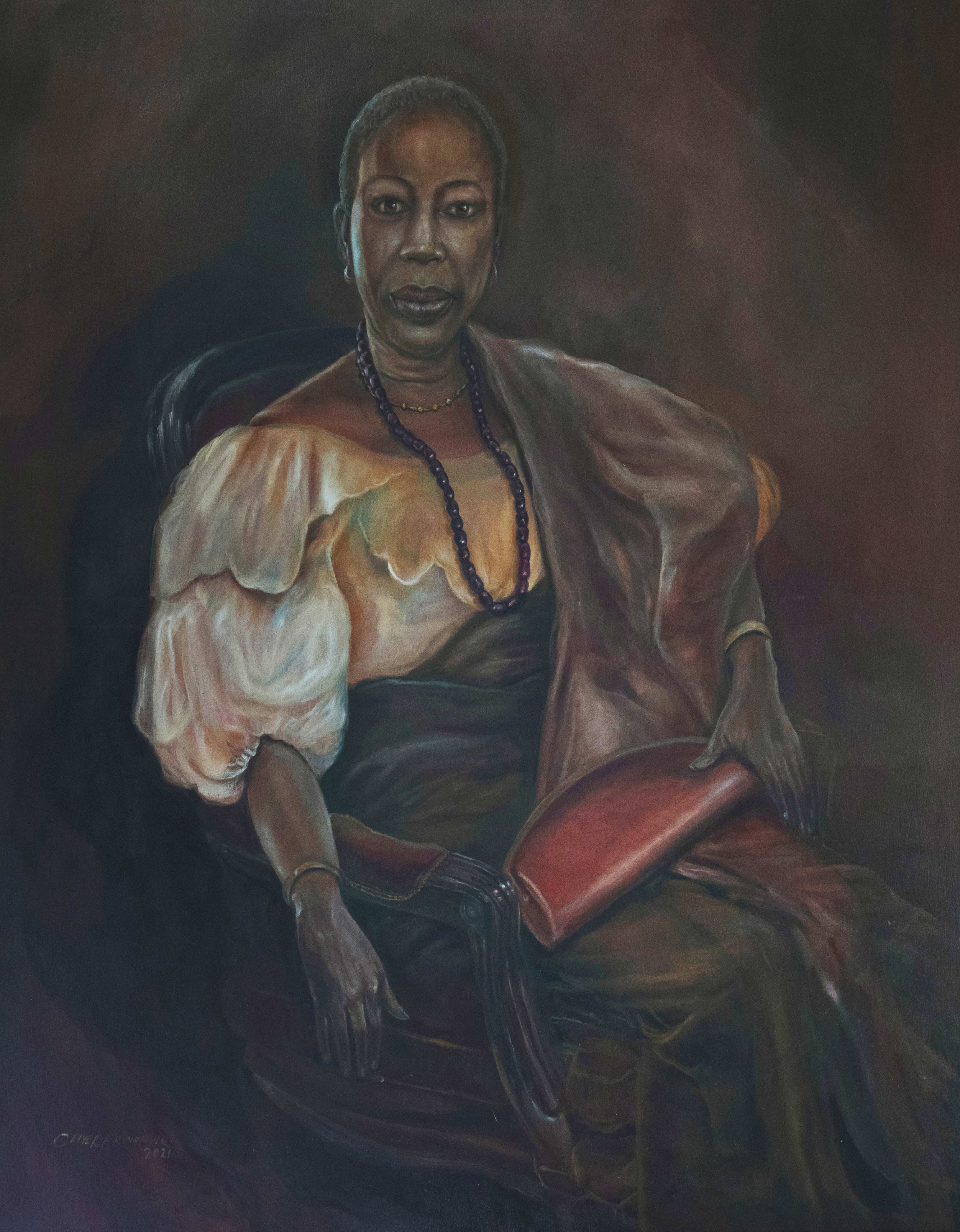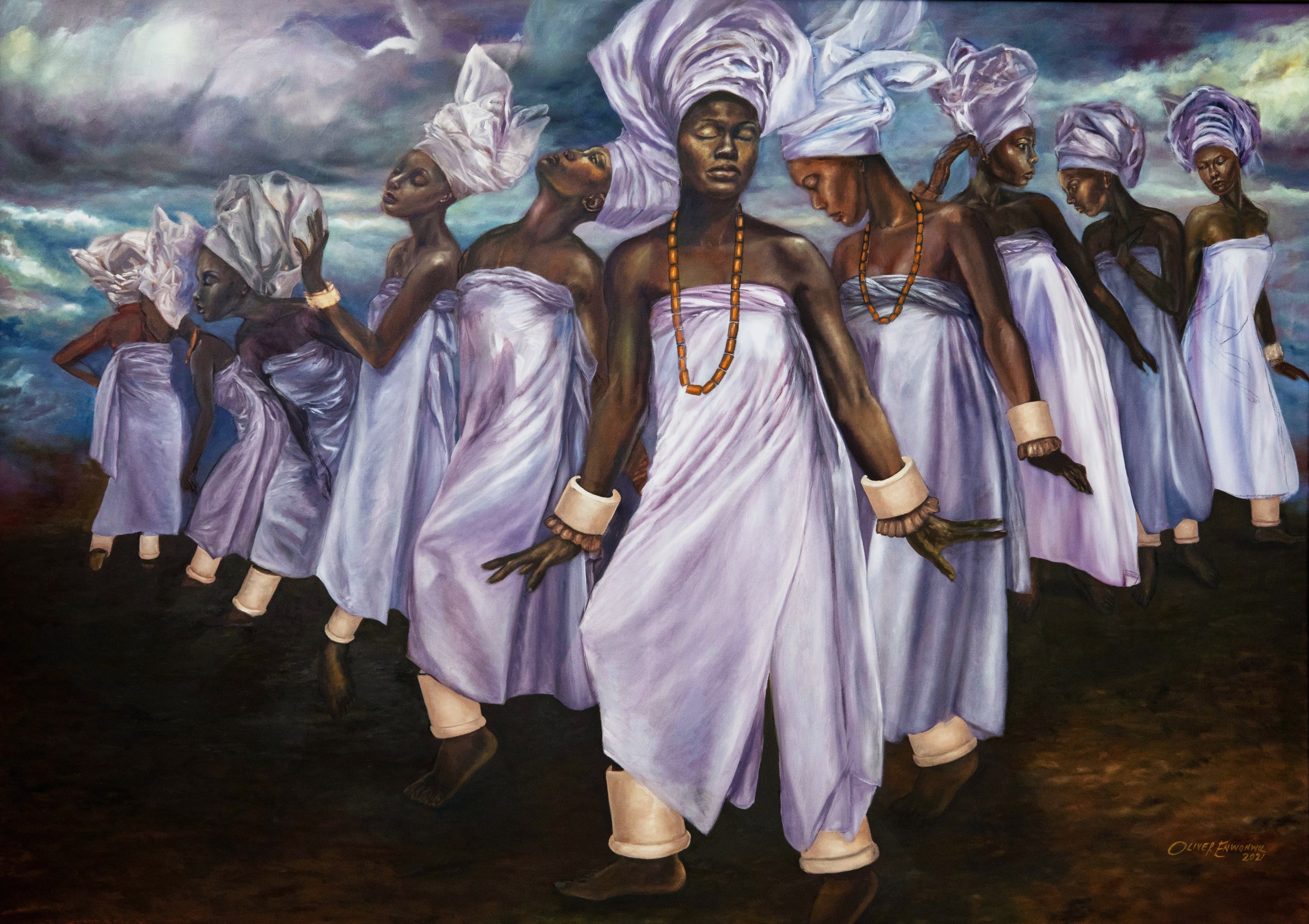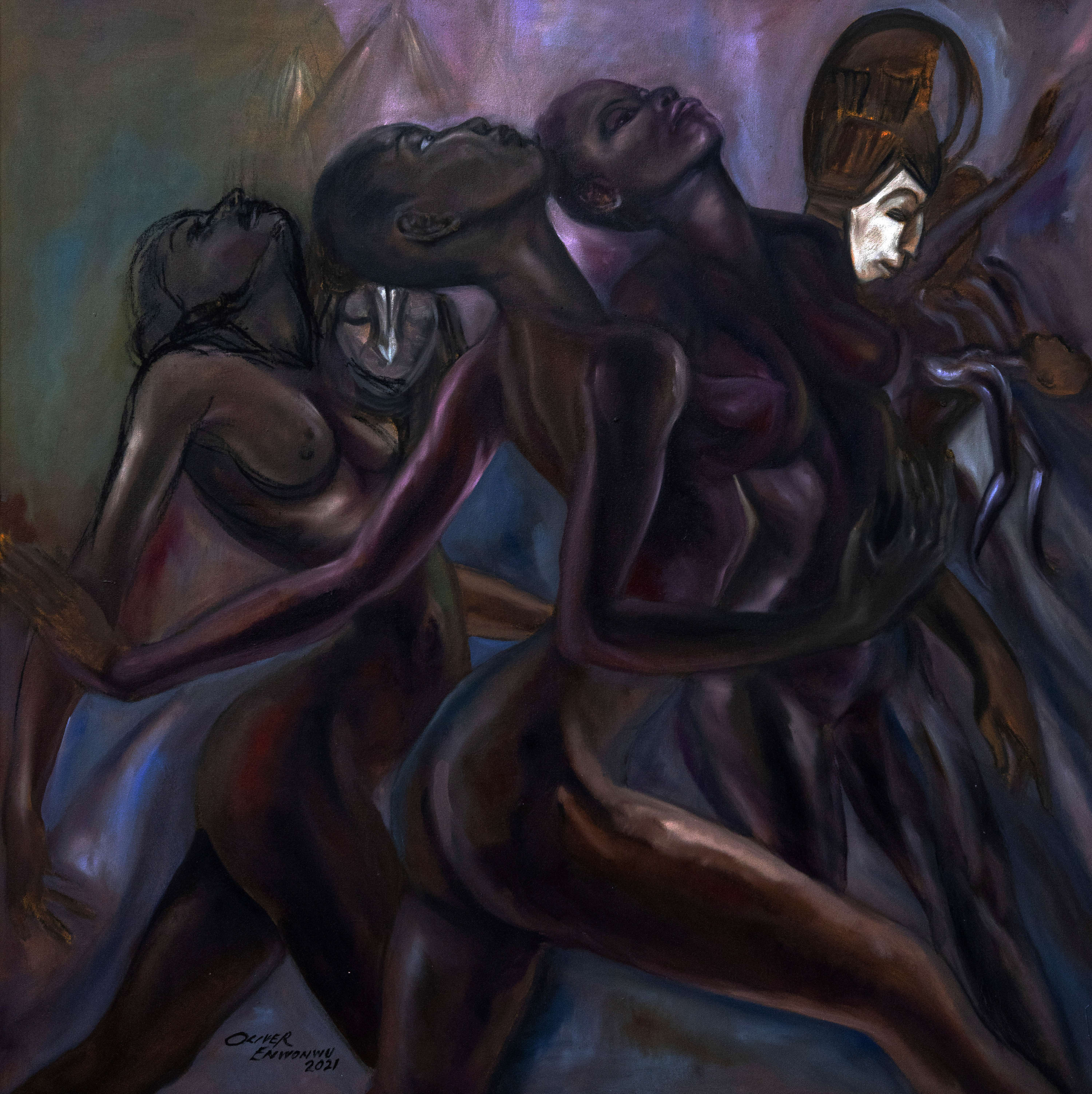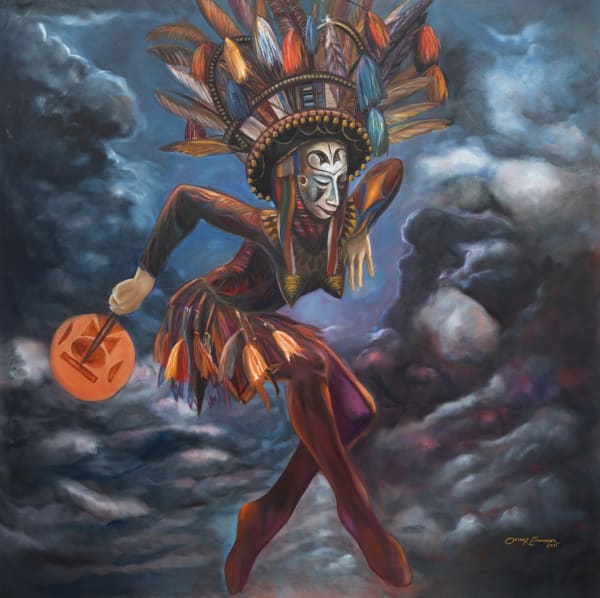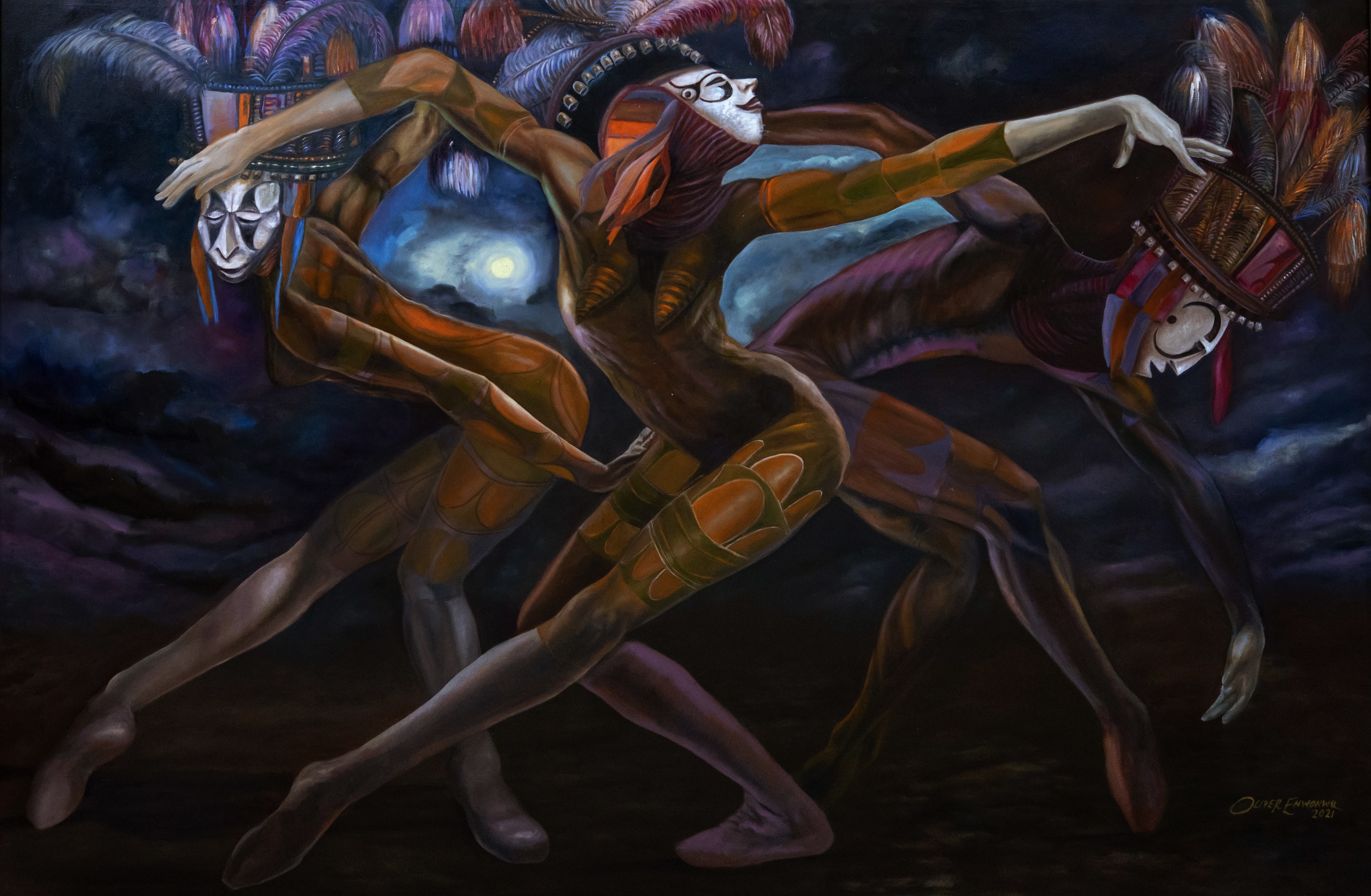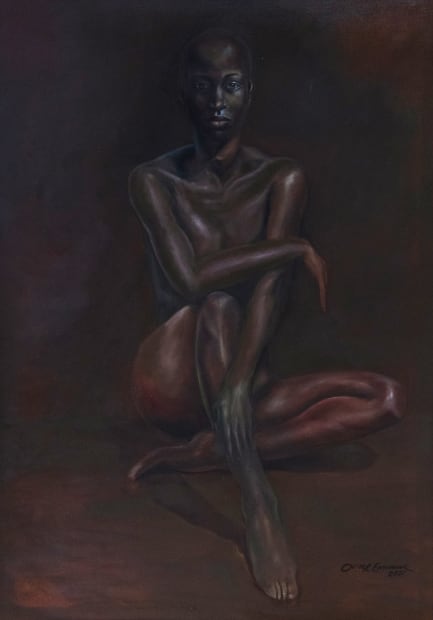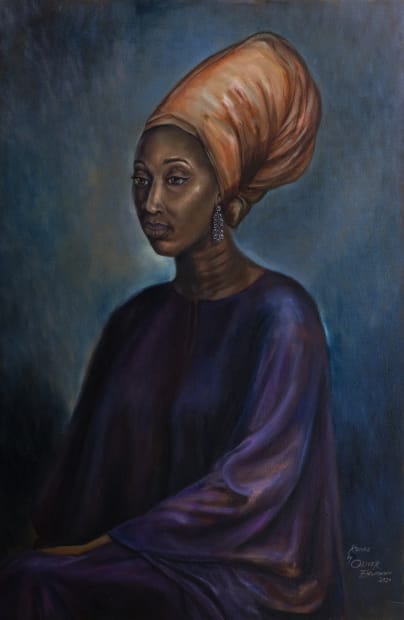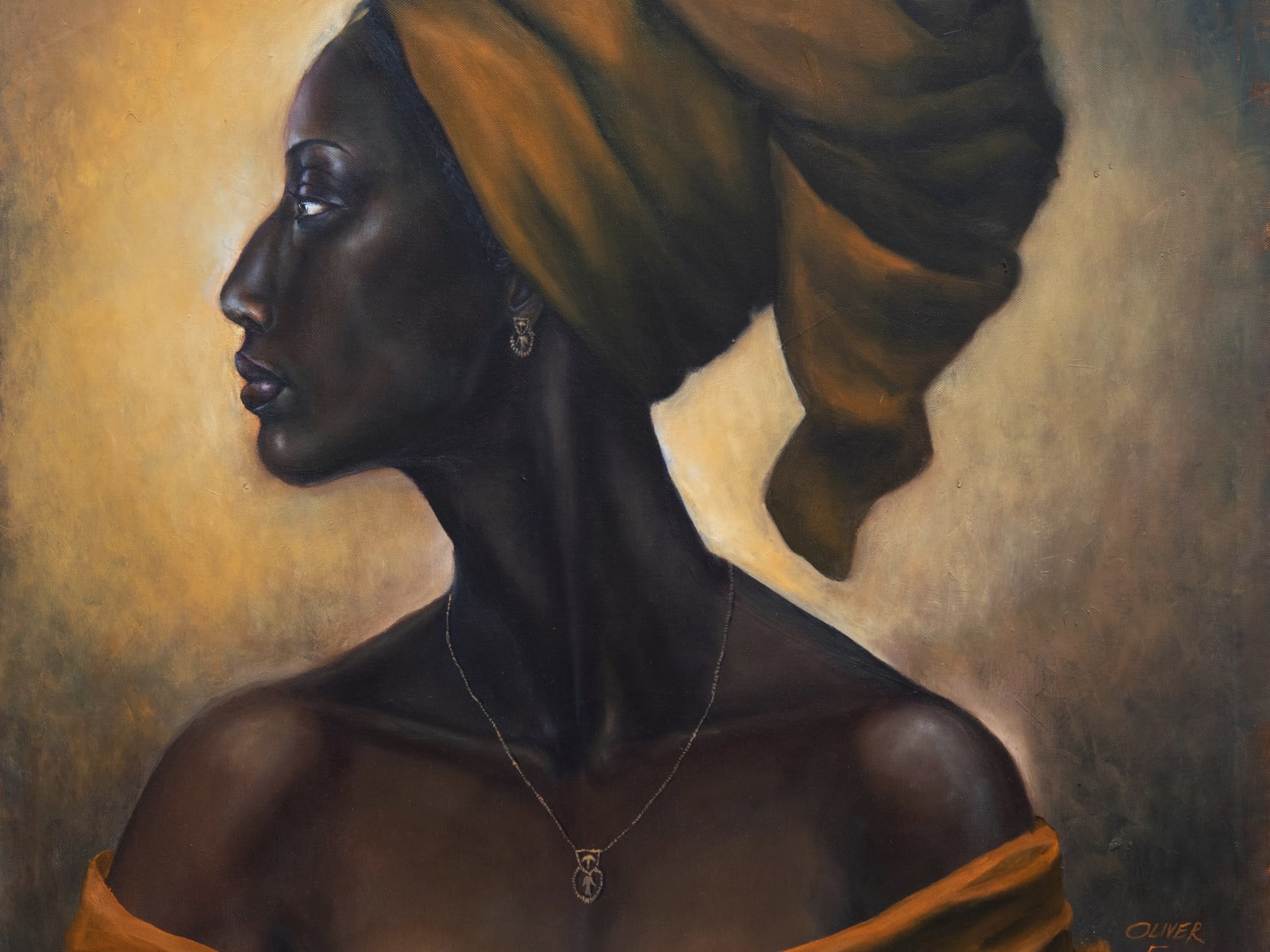-
-
POLITICS OF REPRESENTATION
-
-
Through OLIVER Enwonwu’s strong figurative style, Politics of Representation interrogates the complex layers of history connecting the African continent with the West. His powerful portraiture celebrates the cultural, political, and socio-economic achievements of Africans and how these have affected the identity of the global black race. The exhibition contains works from Enwonwu’s ‘Body of Power’, ‘Signares’, ‘Belle of Senegal’, and ‘Wanderers’ series, which explore the effects of migration, eventually “dissolving boundaries and our notions of time and space.”
He paints pre-dominantly female figures in aristocratic poise with stoic expression, observing their on-lookers with elegance, formality, and grace. There is a quiet aloofness which exudes from their gaze, as if in defiance of being forgotten, and finally being celebrated with proper recognition.
-

-

-

-
-

-

In The Cult of the People, the largest work in the exhibition, Oliver presents a group of female dancers in traditional attire, adorned with ivory bracelets on their wrists and ankles. These women represent the titled members of the Otu-Odu Women’s Society of Onitsha, who traditionally wore large, extremely heavy elephant tusks on their wrists and ankles, as a sign of the highest form of female achievement, prominence, and power[1],[2].
-

-
As a counter-point to his female subjects’ elan and dignity, Oliver’s masquerades are painted in classical dance poses, exhibiting athletic agility mid-air. The artist is clearly influenced by his late father’s exploration of the ogolo masquerade, but Oliver’s rendition centers around the spectacle of their performance, dance, costume, and music, pivoting around an epicenter of traditional and spiritual energy. In Spirit in Flight, Oliver paints a lythe masquerade dancing against a thunderous cloudy sky, a masked spirit-being in full cultural regalia. It is from this rhythmic performance that Oliver’s art captures our imagination as if we are bystanders enjoying a frenzied traditional dance in the village square, the heat rising as the masquerade twirls with lightening speed.
-

-
The masquerades are in contrast to Oliver’s male portraits, of Tuareg men from Nigeria’s northern Sahel region. These powerful portraits of faces wrapped within a complex circuit of rich twisted fabric, reveal only piercing wise eyes. They appear to know much more than they care to reveal. Their dry parched skin reflect the dips and troughs of their nomadic journeys, steeped in age-old tradition.
-

-

-

Oliver Enwonwu holds a Master’s degree in Visual arts with distinction from the University of Lagos, Nigeria and is currently working towards his PHD in African Art History at University of Benin. He comes from a long line of remarkable artists, such as his grandfather, a reputable traditional sculptor, and his father Ben Enwonwu, widely known and celebrated as Africa’s most celebrated pioneer modernist. Enwonwu is the president of the Society of Nigerian Artists, the umbrella professional body for all practicing visual artists in Nigeria. He has participated in over fifteen exhibitions, spoken about the global art market at global conferences, and has been featured in international media including the BBC, Arise TV, The Daily Times and Vanguard.
Copyright © 2025 SMO Contemporary Art
Artsy, opens in a new tab.
Instagram, opens in a new tab.
Facebook, opens in a new tab.
Send an email
Join the mailing list
This website uses cookies
This site uses cookies to help make it more useful to you. Please contact us to find out more about our Cookie Policy.
Join our mailing list
* denotes required fields
We will process the personal data you have supplied in accordance with our privacy policy (available on request). You can unsubscribe or change your preferences at any time by clicking the link in our emails.
